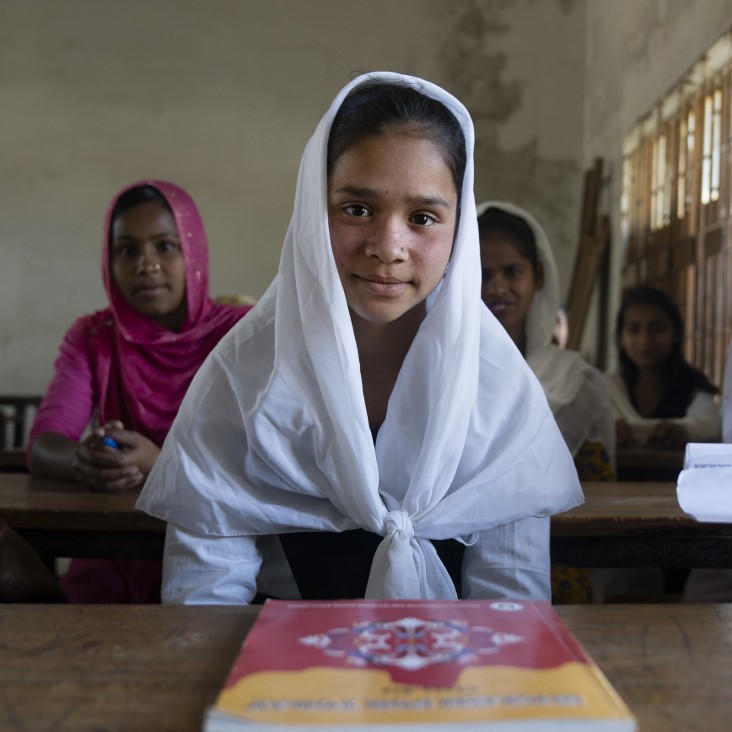Speeches Shim

Over the last decade, Bangladesh has made notable progress in expanding access to education. In a country of over 18 million primary school students, Bangladesh has achieved near universal net primary enrollment, with approximately 98 percent of children of primary school age enrolling in school. Bangladesh has also achieved gender parity in access to education, and 50.9 percent of all enrolled students were girls in 2016.
Nonetheless, the quality of education in Bangladesh remains low. The most essential measure of quality in a school system is whether its students are learning the foundational skill for all future learning: reading. In Bangladesh most children are not acquiring basic reading fluency. A USAID-funded assessment in spring 2018 found that 44 percent of students finish first grade unable to read their first word, and 27 percent of third grade students cannot read with comprehension. These poor learning outcomes contribute to grade repetition and dropout, and 20 percent of all students drop out before completing fifth grade. Poor literacy in the early grades also inhibits Bangladesh’s economic growth, as the pipeline of youth workers lack the foundational skills to be productive and engage in a knowledge-based economy.
To tackle these challenges, USAID supports the Government of Bangladesh to improve early grade reading. To support the acquisition of this foundational skill, USAID works in partnership with the Ministry of Primary and Mass Education to enhance investments in teacher training, teaching and learning materials, and community reading camps to ensure that all children learn to read in their first years of schooling. USAID also co-chairs the Education Local Consultative Group, which brings together 12 development partners to coordinate and advocate for education.
Improved Reading Skills for Primary School Students
USAID provides intensive support to government primary schools to improve early grade reading in the Bengali language, including teacher and head teacher training, the provision of supplementary reading materials, and classroom assessment. To support additional learning outside of school, programing also includes the creation of community reading camps where children practice reading alongside community volunteers. Recognizing that not all students speak the Bangla language, programming also developed supplementary reading materials in three languages spoken in the Chittagong Hill Tracts.
Access for Out-of-School Children
Despite gains in access to education, there are still gaps to ensure equal access to quality education for all. USAID partners with the non-governmental organization BRAC to establish and run 1,000 one-room school houses for children in urban slums where there was previously no access to schooling. Through an accelerated curriculum, these students are brought back into the education system and given the opportunity to learn and excel.
Sesame Street Bangladesh
Since 2006, USAID has supported Sesame Workshop to develop the television program Sisimpur (“Sesame Street”), which is viewed weekly by over 10 million children. The episodes teach critical pre-literacy skills, such as letter recognition and vocabulary. The episodes also include thematic messages related to other development objectives of USAID/Bangladesh, such as nutrition, hand-washing, the environment, and peace and conflict resolution.
Results
Since 2013, USAID education programs in Bangladesh have:
- Reached 1.3 million children in 5,112 schools in all seven divisions of Bangladesh.
- Expanded access to schooling to 27,301 out-of-school children.
- Increased the percentage of third grade students reading with fluency and comprehension by 18 percent, as compared to students in non-beneficiary schools. That translates to 234,000 students with improved reading skills.
- Increased the number of first grade children able to read their first word by 36 percent, as compared to students in non-beneficiary schools. As a result, 468,000 students have become readers through USAID assistance.
- Trained more than 16,667 teachers in how to teach early grade reading.
- Distributed 2,061,881 books and supplementary reading materials to primary school classrooms.


Comment
Make a general inquiry or suggest an improvement.